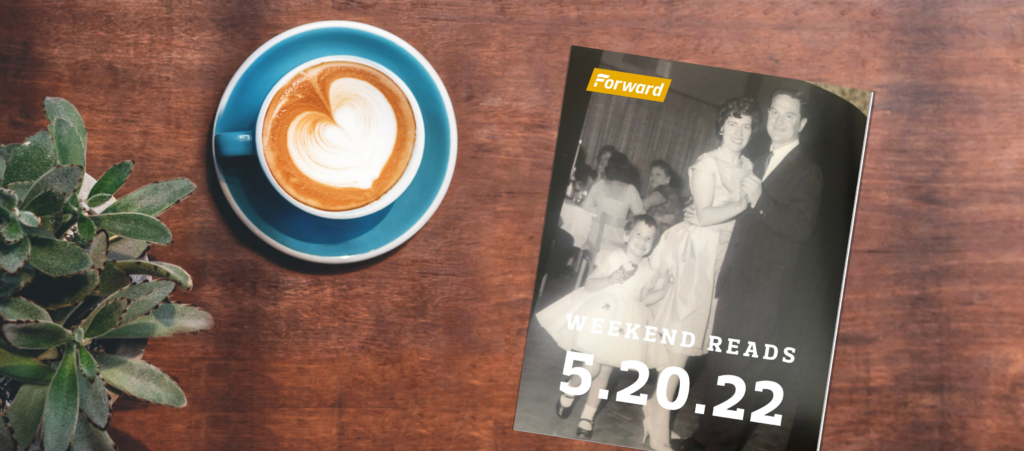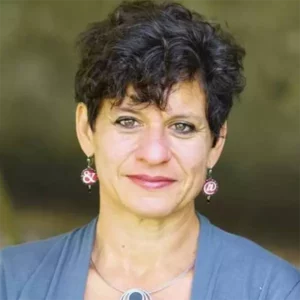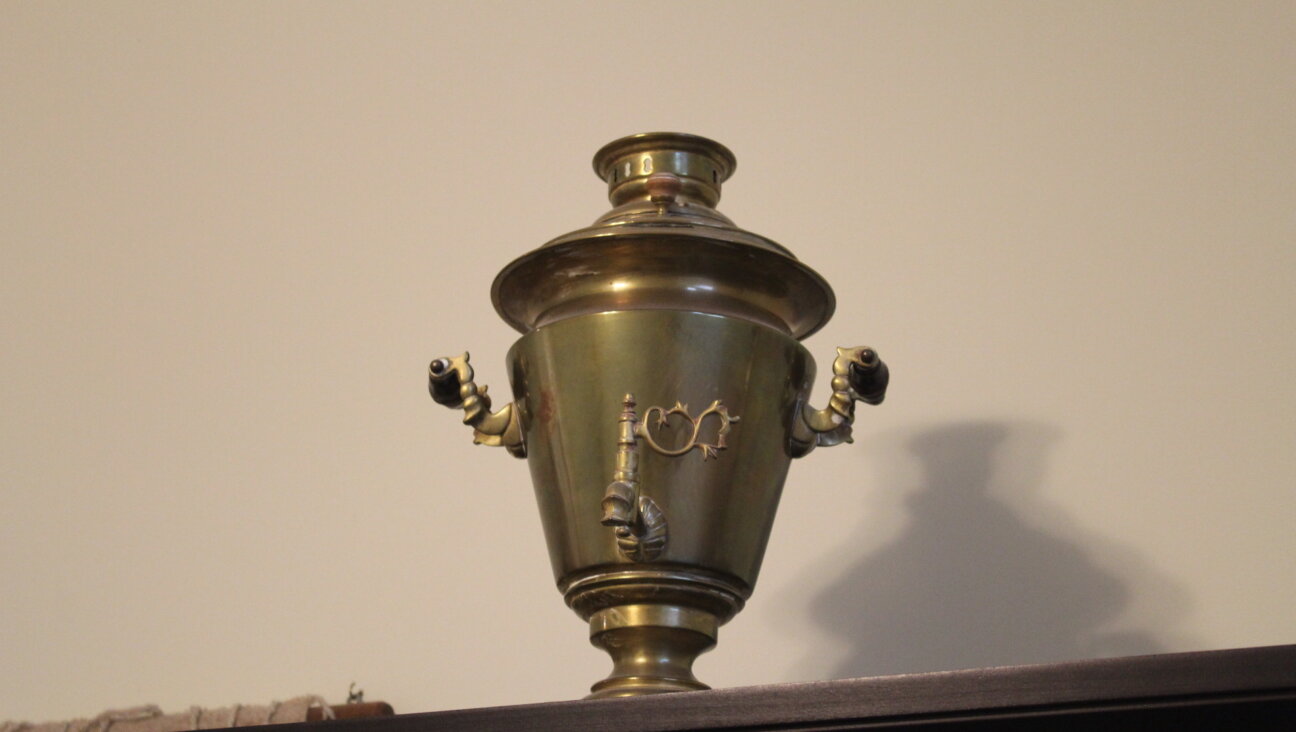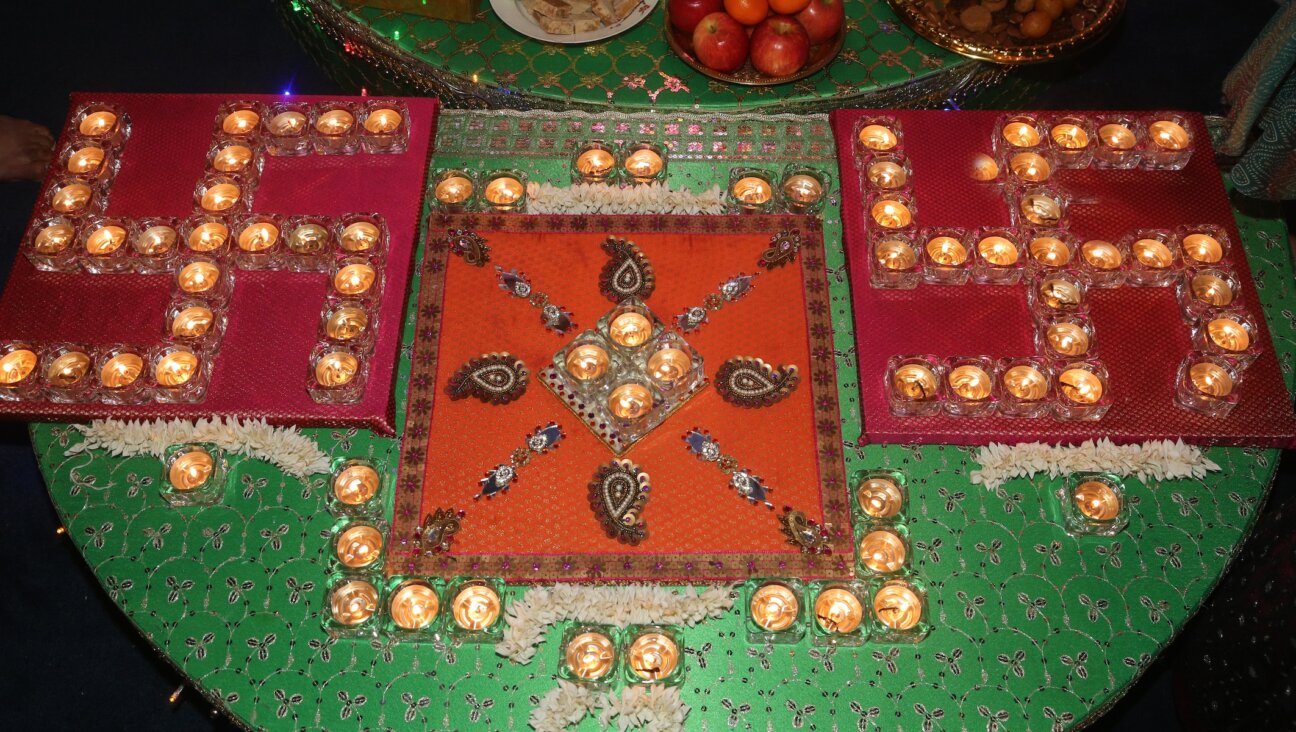Why we published an article about what the Buffalo shooter’s screed says about Jews
Our editor-in-chief reflects on criticism and acknowledges some missteps.
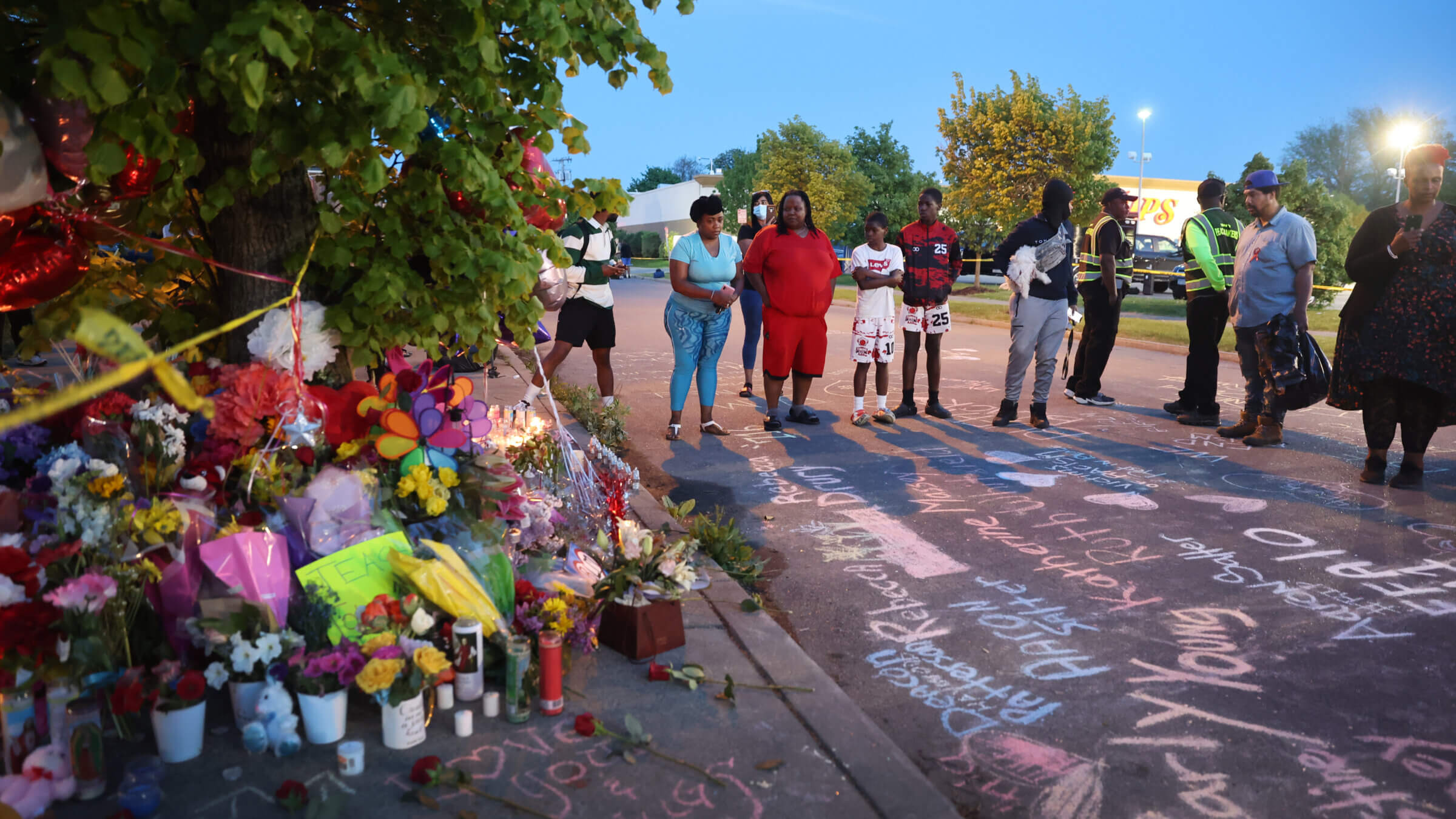
Names of victims and messages of healing are chalked on the ground at a makeshift memorial outside of Tops market on in Buffalo, New York. Courtesy of Getty Images
This is an adaptation of Looking Forward, a weekly email from our editor-in-chief sent on Friday afternoons. Sign up here to get the Forward’s free newsletters delivered to your inbox. Download and print our free magazine of stories to savor over Shabbat and Sunday.
On Tuesday, three days after the horrific Buffalo supermarket massacre targeting Black people, a colleague told me that my photograph was included in the gunman’s 180-page online screed outlining his motivations.
It was a tiny thumbnail headshot, one of 85 in a gallery of executives and journalists at The New York Times, each adorned with a blue Star of David.
This gallery was one of six highlighting Jews’ over-representation at major news organizations compared to the general population, invoking the old trope that Jews control the media as part of the broader “great replacement” conspiracy theory. (Never mind that I left The Times in 2019, nor that some of the people depicted are not Jewish.)
Our editorial fellow Samuel Breslow, who had done a close reading of the screed while researching his excellent explainer of replacement theory the day before, told us there were in fact more than 100 mentions of Jews in the deranged rant. I asked that he compile a dispassionate account of what the document said about Jews, which we published later that day.
Some on our team questioned the wisdom of this assignment. They worried about platforming this terrorist’s warped ideology, citing research that suggests media coverage of extremists’ actions and rationales only serves to radicalize others and fuel further attacks.
They also expressed concern that such a piece could draw attention away from the appropriate focus on the core of this tragedy: the Black community that was targeted, the 10 lives lost.
I understood these risks but was confident we could navigate through them — and needed to, responsibly, given our role as a Jewish news organization. From the first hours after the shooting, we and other news outlets had described the gunman’s screed as “racist and antisemitic” and explored how these two hatreds are intertwined in replacement theory.
A natural reader question, especially for our audience, was: what, exactly, did this screed say about Jews? People were asking me; I had been wondering myself.
I’m proud of what we published, though there are a few things I wish I’d done differently.
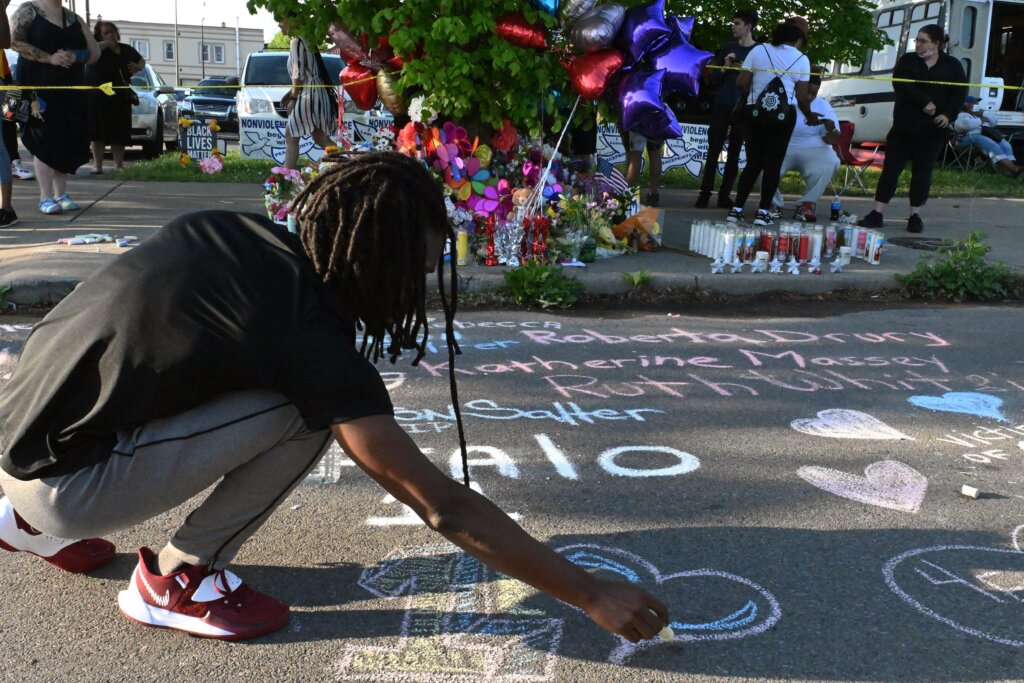
As it turned out, Samuel discovered the shooter’s diatribe actually spent more space — 30 of its 180 pages — on Jews than on any other group. This was a surprise — I’d thought of Samuel’s piece as a simple accounting for the historical record, but now it contained a bit of news as well. It also made the framing more challenging.
We originally published the piece with the headline, “The gunman killed Black people. But his screed focuses more on Jews.” I cringed a bit at that, concerned about the use of both “but” and “more,” and changed it Wednesday morning to say: “The gunman killed Black people. Here’s what his screed says about Jews.”
I still worried it could be interpreted as trying to shift focus away from the victims and onto ourselves, but couldn’t come up with a better option.
A few people on Twitter, and more in a Jewish women’s Facebook group I’m privileged to belong to, derided the whole article. Some said it fell into the false-binary trap that erases the existence of Black Jews. Others said it distracted from the victims, suggested some kind of “competition” among targeted groups, and was particularly offensive during this first week of mourning those killed.
“This is not something the Jewish community needs to make about ourselves,” one wrote. “We’re never going to find solutions for these problems unless we really listen to people — Black people, especially — and let them lead.”
I responded to some of these comments, trying to explain — as I did above — why we had done the piece and how it fits into our mission as a Jewish news outlet serving the breadth and diversity of our communities. That was a mistake. What I had intended as transparency and engaging criticism read to others like defensive doubling-down. I was urged to shut up and listen.
So I spent several hours yesterday in conversation with the Forward’s editor-at-large, Robin Washington, and Rabbi Sandra Lawson, a member of our Forward Association, who are both Black and Jewish; and with Emilia B. Diamant, who leads anti-racism workshops across the Jewish world; and listening in to a Zoom event the progressive Jewish action group Bend the Arc hosted about the attack.
Robin, a veteran journalist who has run both a Black publication and a metropolitan daily, among many other things, said he “was not terribly thrilled” about the article.
He saw no need to give air to the ramblings of a “crazy” person, thought it falsely suggested Black and Jewish are “mutually exclusive” identities and that the headline diminished the Black experience of the attack regardless of what the article itself said.
Rabbi Sandra, as she likes to be called, also said the headline was problematic, explaining: “Black people are in pain, so the hypersensitivity around anything that looks like it’s centering white people is going to be painful for Black people, and particularly for Black Jews.”
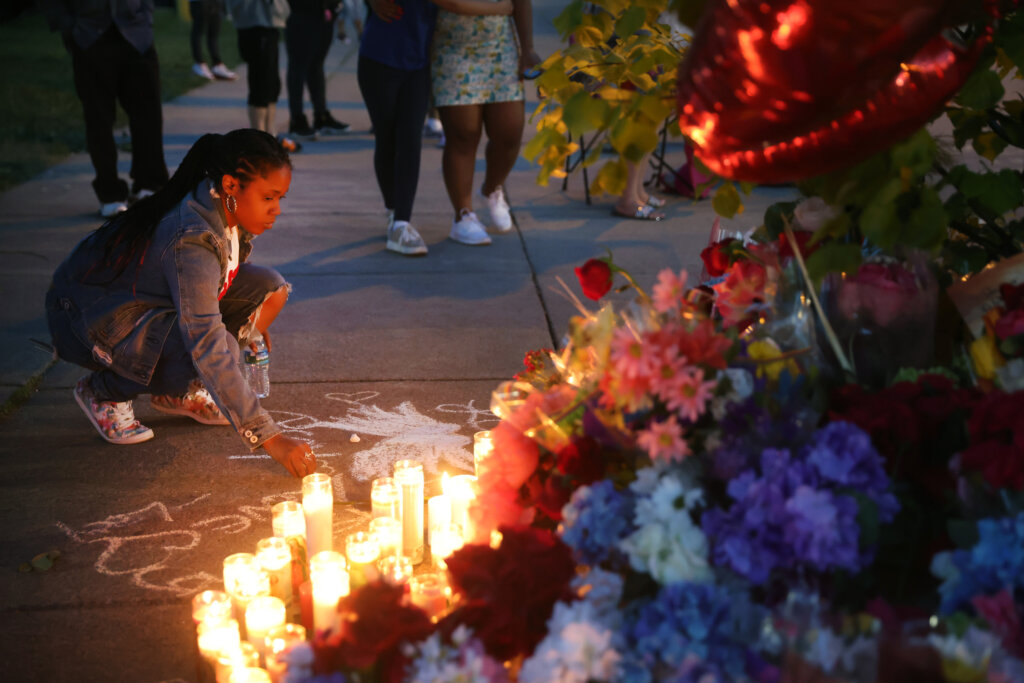
“This is the tricky thing: anyone who pays attention to this understands that the root of all this vitriol, this white supremacy stuff, is hatred of Jews,” she noted. “It’s hard to navigate — I don’t envy what you have to do.
“The way our country is structured, it’s like you talk about Black stuff, you talk about white stuff, you talk about Jewish stuff, you talk about Christian stuff — we don’t do a good job on the intersection of things. We need to be thinking multiculturally about everything.”
Emilia, who it turns out went to the same high school as I did — alas, 15 years later — focused on my Facebook responses explaining our intent and journalistic responsibilities, which she saw as a “fight or flight” mode common among white people in conversations about race.
“It’s a natural reaction, it’s understandable — in so many institutions, we were trained to be, like, ‘no, I want to explain myself,'” she said. “It gets scary for us as white folks when we get implicated in any way. We want people to know: that’s not us. It tends to, unfortunately, create a dynamic where it makes things worse, not better.”
Thursday evening, I signed onto Bend the Arc’s event, which began with a powerful tribute to the 10 people murdered in Buffalo, with a slide listing their names and ages and a speaker sharing poignant details about their work, hobbies and families.
Ben Lorber, a researcher and writer who focuses on white nationalism and antisemitism, later spoke about the attack with Ginna Green, a Black Jewish activist (who, as devoted readers of this space know, also co-hosts our advice podcast, A Bintel Brief — and who had posted in the Facebook group that she agreed with other Black Jews’ critique of our screed article as insensitive and problematic.)
Ginna said that in the days since the shooting, she had been concerned about “a competitiveness around who is at most risk and who is in the most danger,” particularly among white Jews, and asked Lorber for his “thoughts on how our community can resist the temptation to be divided.”
Lorber, who is white, said it was important for white Jews “to realize that we weren’t the main targets here and to center Black voices,” and “to really show up for our comrades right now.”
At the same time, he said, “I want to validate the aspect of that fear that’s rooted in the knowledge that antisemitism and anti-Blackness are deeply connected in the ideology of this white-nationalist shooter and across our broader society.”
When Ginna opened for questions from the audience, the first one was: Why is the mainstream press not talking about the extreme antisemitism underlying the great replacement theory?
Lorber challenged the premise of the question, saying he had been “heartened that many mainstream sources are able to draw these connections,” and I agree; antisemitism has been a core part of coverage of this attack and previous work on replacement theory and other white-supremacist canards.
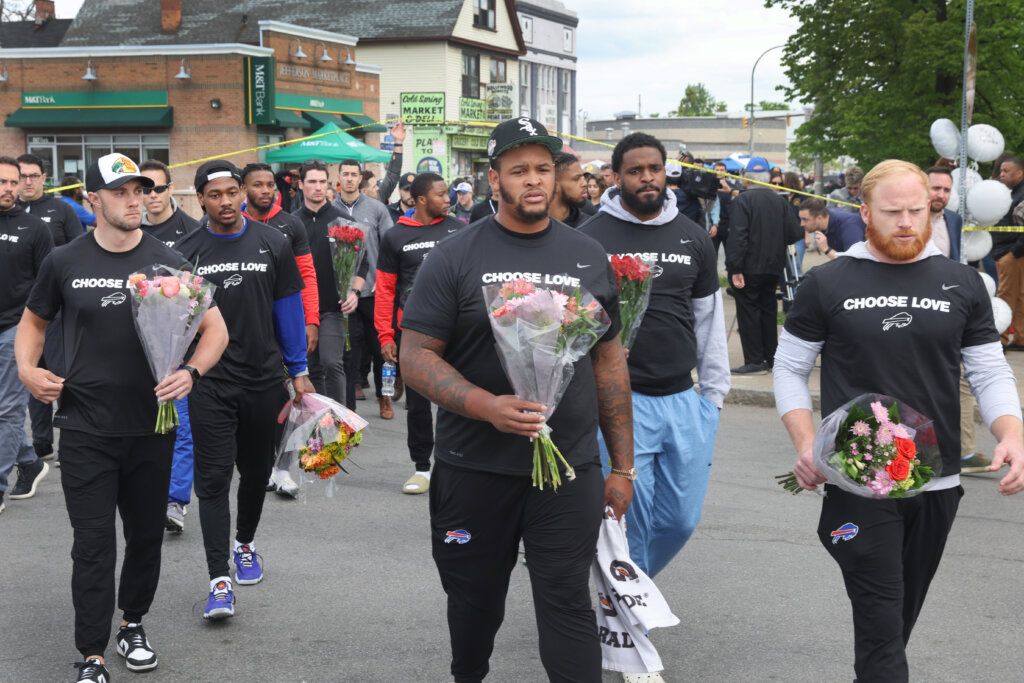
The question also affirmed my instinct that our readers need us to provide more detail, depth and nuance on the antisemitic elements of this and other attacks. Which we have done and continued this week with seven pieces (so far). Samuel’s fine examination of what the shooter’s screed says about Jews is not the whole story, should not be anyone’s focal point. It is, though, an important element in the broader coverage.
Regular readers of this space know that I consider transparency and engagement with criticism hallmarks of my journalism and my leadership of the Forward.
I answer virtually every email I get that is not a profanity-laced personal attack; I believe that anyone who has taken time not only to read our work but write to us about it deserves their feedback to be addressed. I also try to respond to thoughtful critiques of our journalism on social media, though it has gotten me in trouble before. And: I try very hard to learn from my missteps.
In January, I used this newsletter to publicly air and address criticism of our story about the fact that the Texas synagogue where a gunman took Rabbi Charlie Cytron-Walker and several congregants hostage had a few months before failed to renew the rabbi’s contract. Back in October, I devoted a whole column to addressing inbox-criticism.
And this morning, with Robin’s help, I changed the headline on Samuel’s article again. It now reads: “The Buffalo shooter murdered Black people. His screed also obsesses over Jews. Here’s what it says.,” and added an Editor’s Note explaining the change.
I’m going to continue to make mistakes, and I’m going to continue to respond to critics. I’m going to continue to explain our journalism to you, our readers — though I am going to be more careful about balancing that instinct toward transparency against listening fully to the criticism and the critics, especially when they are of a different identity than mine, especially when they are in pain. I apologize for not handling this one better.
But this is not about me. So I’m going to spend this weekend thinking about the victims of the Buffalo attack: Roberta A. Drury, who was 32 and buying groceries at the Tops supermarket to make dinner; Margus D. Morrison, 52, a school bus aide who loved to joke; Andre Macknell, 53, who was picking up a cake for his son’s third birthday; Aaron Salter, 55, a retired Buffalo police officer and the store’s security guard; Geraldine Talley, 62, an avid baker who brought apple-cinnamon bread pudding and chocolate-peanut butter pie to loved ones.
Celestine Chaney, 65, a great-grandmother and cancer survivor who was picking up strawberries for shortcake; Heyward Patterson, 67, a deacon who often drove fellow church members to Tops; Katherine Massey, 72, who recently wrote a letter to the Buffalo News about gun control; Pearl Young, 77, who volunteered every Saturday at a local food pantry; Ruth Whitefield, 86, who had just left a visit with her husband in a nursing home.
May their memories be for a blessing.
Your Weekend Reads
That’s Laurie Gwen Shapiro’s Aunt Paula on the cover of our Shabbat PDF, dancing with her husband, Sid Goldstein, in one of our best-read pieces this week. Inside, you’ll also find an article about the Jewish pro-life group whose amicus brief supporting the overturning of Roe v. Wade was written and financed by evangelical Christians; scenes from a Jewish abortion-rights rally; our explainer of “great replacement theory”; and a profile of a family whose son was grievously injured at last year’s celebration of Lag B’Omer on Israel’s Mount Meron.
